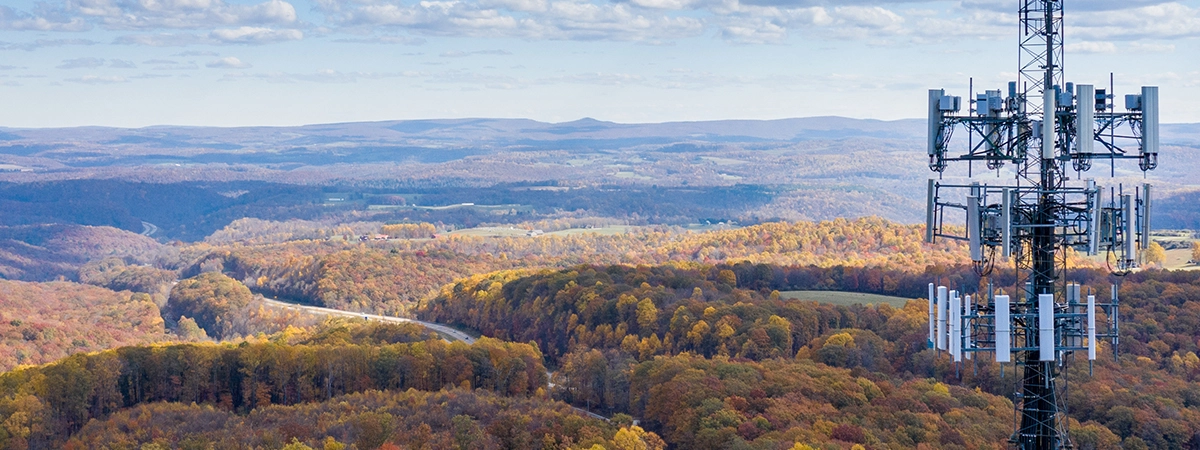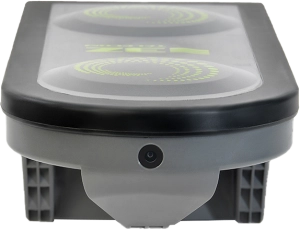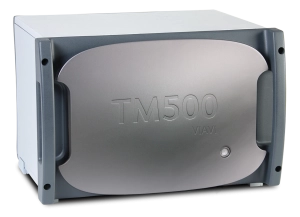5G のネットワーク展開
VIAVI の支援を得て、5G ネットワーク展開にまつわる課題を克服しましょう。
Massive MIMO、ネットワークスライシング、ビームフォーミング、およびネットワーク機能の仮想化(NFV)などの、5G に不可欠な画期的なテクノロジーは、新しい 5G ネットワーク展開への段階的なアプローチを必要とします。また、それらは、多額の投資が必要であり、通信事業者は、今後 10 年間で新しい 5G ネットワークの展開に1 兆ドル以上費やすと予想されています。この大きな課題にはさまざまな戦略と選択肢があり、それぞれに 5G ネットワークテクノロジーとアクセスの高速化の面で利点と欠点があります。
新しい 5G 展開の約束は、計画の段階から現実へと移行しました。約 10 年間にわたって計画され開発された次世代のワイヤレステクノロジーは、限定的なサービスを開始しました。5G 信号は今後も高速化、レイテンシの短縮、サービスの向上をもたらします。この展開を可能にする基本的なアーキテクチャは、複雑で多層的です。
今すぐ 5G 展開の拡張を始めましょう。 便利なハンドブックをダウンロードする
5G の展開オプション
仮想化要素とエッジコンピューティングの統合、フロントホールおよびバックホールネットワークの構成は、追加の考慮事項です。スモールセル配置戦略、MIMO アプリケーション、およびスペクトラム割り当てにより、5G NR の導入はケースごとに固有のものになります。このレベルのカスタマイズには、利用可能なネットワーク展開モデルをサポートするためのスケーラブルで正確かつ効率的なテストソリューションが必要です。
初期の 5G 開発サイクルを通じて、通信事業者と業界関係者は新たな傾向を調査しました。これにより、5G ネットワークの迅速な展開サービスと標準化が必要であるという全体的な共通認識が生まれました。その結果、LTE ワイヤレス業界の 45 の主要企業・団体が、2017 年 3 月に招集され、「Way Forward on the overall 5G-NR eMBB workplan(5G-NR eMBB 全体作業計画の進め方)」というタイトルの 5G 展開計画が作成されました。この連合は、非スタンドアロン(NSA)5G の試験と展開にコミットすることにより、5G 採用を加速することに合意しました。
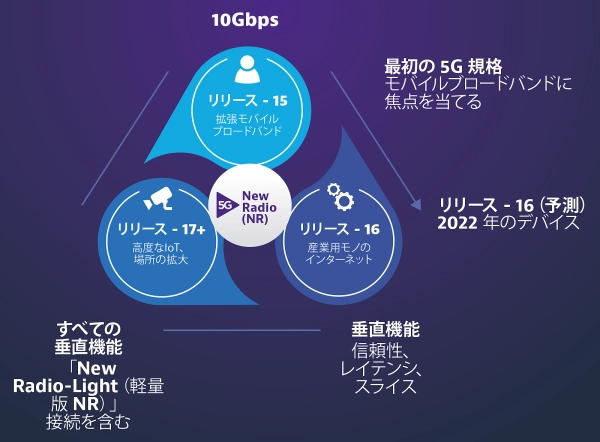
第 3 世代パートナーシッププロジェクト(3GPP)では、スタンドアロンおよび非スタンドアロンの 5G ネットワーク展開のための複数の選択肢が定義されています。5G 仕様のリリース 15 は、2017 年 12 月に公開されました。このリリースは、主に非スタンドアロンの選択肢に焦点が当てられていました。これに続き、2018 年 6 月に最初のスタンドアロン仕様が公開されました。
5G 展開オプション 1 は、進化型パケットコア(EPC)を備えた単なるレガシー LTE です。オプション 2 には、LTE アンカーなしで 5G コアネットワークと通信する NR のみがあります。この「スタンドアロン」オプションでは、対象エリアで継続的な NR カバレッジが必要です。3GPP 展開オプション 4、5、および 7 はどれも、既存の LTE インフラと新しい 5G 機能の組み合わせです。このデュアル接続は、5G とLTE の長所を組み合わせて、5G 展開を促進する効果的な方法です。
また、3GPP リリース 15 の仕様では、5G 信号の送受信方法も定義されています。広帯域幅と超信頼低遅延通信(URLLC)が重要な目標でした。これらの目標は、副搬送波の間隔や高速スイッチングなどの新しい 5G の進歩によってサポートされていました。リリース 15 で定義されたダウンリンク波形は、LTE 直交周波数分割多重方式(OFDM)との整合性が維持されていました。アップリンク波形では、柔軟性を高めるために離散フーリエ変換(DFT)OFDM が追加されました。
3GPP 5G 仕様のリリース 16は、2020 年 7 月に最終決定されました。範囲内の新しいトピックには、ライセンスのないスペクトラム帯域での 5G ネットワークの展開、産業用 IoT、および 5G 衛星アクセスがありました。5G ネットワークの電力消費を改善するために、ウェイクアップ信号(WUS)、eDual 接続性、およびその他のイノベーションが組み合わされています。
2022 年のリリース 17 の完成により、ネットワークスライシング、より高い(≥52.6GHz)周波数での NR 動作、および URLLC を使用した高度な IoT の新しいユースケースと機能が確立されました。また、3GPP リリース 17 では、統合アクセスおよびバックホール(IAB)と公衆安全通信も改善され、実際の展開から学んだ教訓が組み込まれています。
3GPP リリース 18は、2024 年夏までに完成予定であり、計画されたリリースの中間(7 つのうちの 4 番目)および最初の「5G アドバンスト」リリースとして 5G ライフサイクルのマイルストーンを確立するものです。予想されるイノベーションの中には、新しい人工知能/機械学習のユースケース、ダウンリンクとアップリンク用の MIMO の進化、エネルギー消費を削減する新機能などがあります。
5G 非スタンドアロン展開オプション 3 は、実際には 3つのオプションを 1 つにしたものです。バリアント 3、3A、および 3X は、オプション 3 エンベロープに含まれています。それぞれ LTE 基地局を信号伝達アンカーとして使用していますが、要素間のトラフィックプロトコルの定義はそれぞれに少しずつ異なります。これまでのところ、ユーザーデータは基地局の 5G gNB 部分に直接入るため、5G 展開オプション 3X が最も広く受け入れられています。これにより、高速データレートを管理できるようになっています。また、オプション 3X は、LTE から 5Gへのモビリティに固有の割り込み時間をほとんど発生させずに、より高い周波数でより堅牢なカバレッジも提供します。
5G 展開を成功させる 5 つの鍵
5G ネットワークの展開を成功させる鍵は、従来のベストプラクティスを5G 特有の新しい技術革新に適応させることです。これらの原則には、5G ネットワークのアーキテクチャ、テクノロジー、パフォーマンスの複数の領域が含まれます。
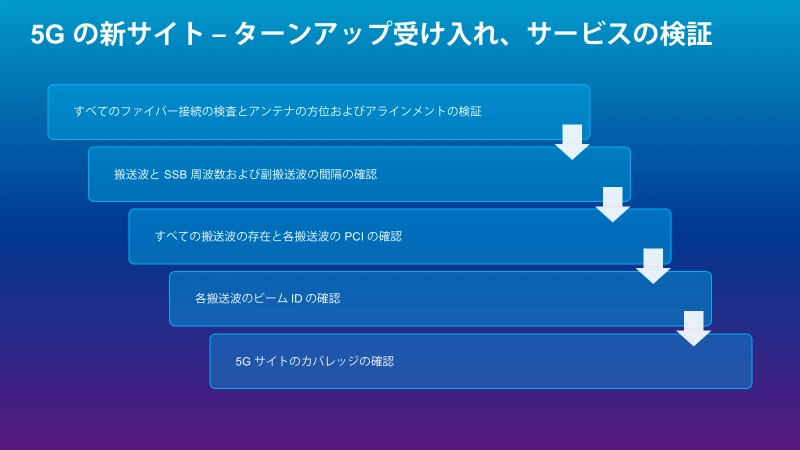
- すべてのファイバー接続の認証とアンテナの方向とアライメントの検証
ファイバーの衛生状態が良好であることの重要性は、5G Massive MIMO に固有のアンテナ接続数の多方面での増加によりさらに増しています。高品質の接続と検証への取り組みは、6GHz 未満の FR1 帯域の同軸ケーブルの導入にも拡大する必要があります。リンク予算を超えると、パフォーマンスが低下し、ターンオンが遅れる可能性があります。方向と傾きの両方の検証を含むアンテナアライメントは、5G セルサイトのパフォーマンスとカバレッジを最適化するための貴重なベースラインを提供します。 - 搬送波と SSB の間隔周波数と副搬送波の間隔の検証
同期シグナリングブロック(SSB)は、5G で LTE 基準信号に相当するもので、セルを識別して特定のユーザー機器(UE)と同期するために使用されます。各 SSB は SSB インデックスと呼ぶ一意の番号で識別できます。UE は、観測された信号強度が最も高い SSB インデックスに基づいて、特定のビームにラッチします。SSB 機能の検証は、5G ネットワークの展開とコミッショニング中に極めて重要です。各副搬送のパフォーマンスと間隔もテストする必要があります。 - すべての搬送波の存在と各搬送波の PCI の確認:
5G ネットワーク展開計画を綿密なものにするには、各搬送波の信号検証とそれぞれの物理セル ID(PCI)を含める必要があります。搬送波集約は、それぞれの搬送波に複数の周波数ブロック、またはコンポーネント搬送波を割り当てることによってユーザーあたりのデータレートを上げるために使用される手法です。搬送波集約による利用率の向上は、5G の帯域幅とユースケースの多様性を実現する重要な要素です。 - 各搬送波のビーム ID を確認します。LTE 展開では、カバレッジはセクター別に包括的に特性評価することができます。5G NR テクノロジーを使用すると、個々のビームはそれぞれ独自のカバレッジエリアのように動作します。5G の「ビーム中心」の考え方では、5G ネットワーク展開の一環として専用のビームインデックス解析の重要性が強調されています。
- 5G サイトカバレッジの検証:
5G ネットワークへのセルカバレッジ出力を検証するには、特定のエリアのビームインデックスとパワー、信号対雑音比を判定するための正確な 5G カバレッジマッピングが必要です。この 5G 展開のベストプラクティスは、特に 5G と LTE のカバレッジエリアを組み合わせた場合、確実に実行するのが難しい場合があります。動的スペクトラム共有(DSS)は、5G と LTE が連携動作し、シームレスなカバレッジと迅速な 5G 展開を可能にします。最高級 5G カバレッジマッピングツールが、LTE と 5G のカバレッジを同時に評価するようにプロビジョニングされるようになりました。
5G 展開の課題
選択肢が非常に多いため、単にどの第 5 世代のアプローチを採用するかを決定することが、多くの展開上の最初の課題となります。画期的な 5G ワイヤレステクノロジープラットフォームは、設計、製造、およびテスト機能の限界を押し広げています。ネットワーク機能の仮想化(NFV)は、コアネットワークのスライシング、エッジでのインテリジェンス、およびその他の重要な 5G 信号機能の前提条件です。これらのテクノロジーを使うことにより、IoT および AI ベースのサービスが可能になります。標準化、セキュリティ、仮想機能を駆動するために必要な CPU パワーの提供は、NFV 開発者が取り組んでいる数多くある課題の一部です。
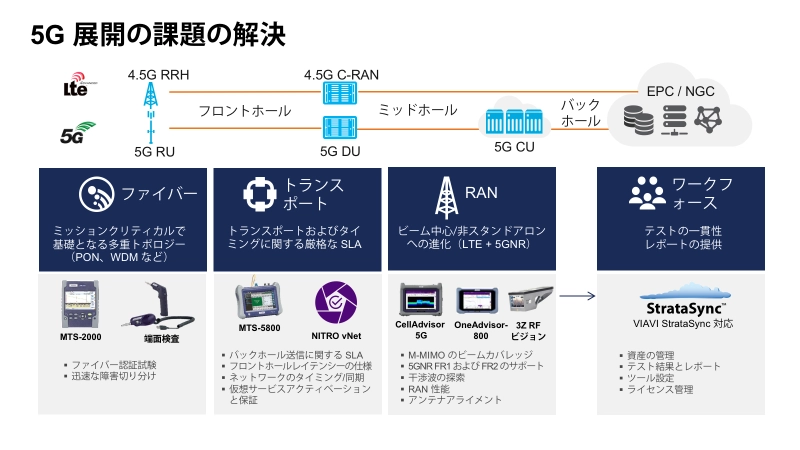
ミリ波は、技術的およびロジスティック上の課題をもたらす可能性のある、もう一つの主要な第 5 世代の要素です。範囲が限られていて、固体の物体を透過できないため、必要とされるアンテナ数が非常に多いことが課題となり、段階的な展開によってしか対処できない可能性があります。
(ビット/秒)/Hzで測定されるスペクトラム効率は、現在、任意の媒体上でエラーなしでデータを送信できる最大速度を定義するシャノン限界によって制御されています。この理論上の上限は、5G の展開に予想され必要とされる上限よりもはるかに低いものです。大規模なアンテナアレイを利用するMassive MIMO とビームフォーミングによってのみ、5G はこの速度の自然限界を効果的に突破できるようになります。
ミリ波とMassive MIMO は、5G ネットワークの展開を成功させるために連携して機能します。周波数が高いほどアンテナの体積が大きくなりますが、波長が短いため、アンテナのフォームファクターを大幅に小さくすることも可能です。こうした複雑なアンテナアレイを展開して正しくアラインすることが課題になる可能性があります。
セルタワー上部で動作する 5G アンテナインテグレータは、RF 計画ツールの仕様に照らしてアンテナアレイの構成を検証します。この検証を適切に完了しないと、カバレッジギャップとサービスの低下の原因になることがあります。これは、基地局インフラのレベルが不十分であると誤って解釈されることがありますが、これは費用のかかる誤診です。
5G アンテナ展開に対する信頼性の高さは、信頼性の高いアンテナアライメントソリューションによって実現されます。VIAVI 3Z RF ビジョン アンテナアラインメントツールは、アンテナ伝送パス内の障害物を検出し、ロール、傾斜、および方位角の設定の正しさを検証します。ビルトインカメラと拡張現実機能を使用して、自動見通し線調査を生成し、アンテナの経路にある予期しない障害物を検出できます。
高周波動作に加えて、5G のエアインターフェイスでは、より高度なスペクトラム共有が導入されています。柔軟な副搬送波間隔と数秘術オプションは、動的時分割複信(TDD)とともに、5G エアインターフェイスの要素です。この方法では、アップリンクとダウンリンクの両方の伝送に単一の周波数を使用し、それぞれ独立したタイムスロットに分割します。TDD は、ラッシュアワーの需要に基づいて各方向に車線を開閉する交通管制に似ています。TDD を使用すると、アップリンクとダウンリンクのトラフィックをインテリジェントにバランス調整して、システムのレイテンシを短縮できます。
5G のエアインターフェイスの革新により、展開とテストにさらなる課題がもたらされる可能性もあります。ゲートスイープルーチンのような従来のテスト手法は、単一方向のトラフィックのみを評価することを目的としています。特に TDD が採用されている場合は、実際の信号を干渉から区別するために、さらなる可視性が必要です。VIAVI の革新的なリアルタイムスペクトラムアナライザは、高度な 5G 対応オプションを採用しています。これには、持続性スペクトラムと監視対象の周波数帯域のより詳細なビューを提供するスペクトログラム機能があります。
Massive MIMO、ビームフォーミング、および空間多重化の効果的な組み合わせにより、5G カバレッジを強化できます。5G ネットワーク展開に固有の、ビームフォーミング技術を使用して、無線信号を特定の受信デバイスに集中させることができます。複数の信号を組み合わせると、ネットワーク構築上帯域幅とカバレッジが向上します。ビームフォーミングを適切に適用することは、特に FR2 帯域(24.25~52.6GHz)で 5G カバレッジの改善に不可欠です。ビームフォーミングはまた、監視、保守、および検証に固有の課題ももたらします。
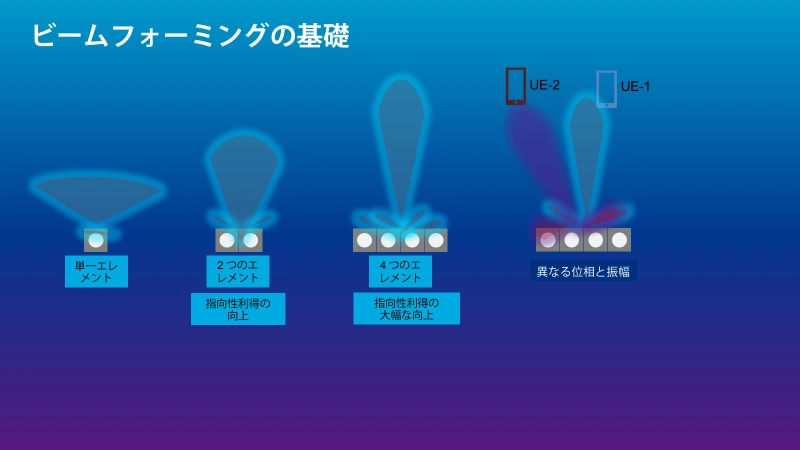
ネットワーク構築上の干渉は、各小さなアレイからの信号を戦略的に階層化することにより、FR2 帯域の 5G カバレッジを改善するために使用される科学的原理です。ビームフォーミングインフラが展開されると、各アンテナの位相と振幅が最適化され、全体としてはるかに高い利得指向性が生まれます。3GPP 規格は、ビームフォーミングポリシーと SSB のロケーションに関して柔軟性をもたらします。また、この標準化が欠如すると、5G ビームフォーミングのテスト手法を定義する際に課題をもたらす可能性もあります。
VIAVI で正確な SSB 構成の処方箋を入手する 5G ビームフォーミングプロファイル Rx ブログ投稿。
ミリ波は、30GHz~300GHz のスペクトラムと定義されます。低帯域スペクトラムは 1GHz 未満の帯域です。これらの 2 つの極値の間には、1GHz〜2.6GHz と 3.5G Hz〜6GHz の間に位置するミッドバンドがあります。5G ミリ波に重点が置かれているとはいえ、低帯域および中帯域のスペクトラムも 5G の容量と信頼性にとって重要です。高周波ミリ波は歪みが発生しやすく、範囲が制限されます。利用可能な周波数のスペクトラムが広いため、これは、DSS とアダプティブビームスイッチングによって対処することができます。たとえば、安定した高周波接続が確立されるまで、必要に応じて UE をより安定した低周波に移すことができます。
低帯域スペクトラムの到達範囲が長いことと信号歪みに対する耐性は、何世代にもわたってワイヤレスインフラの強固な基盤を提供してきました。低周波数は速度が遅く、レイテンシが大きいことも意味するため、5G の時代には低帯域の有用性は低くなっています。
ミリ波の速度とシグナルインテグリティおよび低帯域周波数の到達範囲との間のちょうど良い妥協点であるため、5G のミッドバンドスペクトラムを「ゴルディロックス」スペクトラムと表現する人もいます。これは特に、3.7〜3.98GHz の C バンド周波数範囲に当てはまります。
5G のミッドバンドスペクトラムは非常に魅力的で多くの事業者が 3G 帯域を 5G 用に「リファーミング」しています。さらに、280MHz の C バンドスペクトラムは、2020 年に FCC によりオークションにかけられ民間部門に供給されました。これらの移行は、持続可能な 5G 展開に必要な利用可能なミッドバンドスペクトラムの不足を緩和するのに役立ちます。
5G のネットワーク展開
ワイヤレスアーキテクチャの過去の歴史的移行と異なり、5G は、大幅な交換や「フォークリフト」アプローチではなく、既存のネットワークの継続的な進化の典型です。LTE 展開の大規模なアプローチでは、多くの通信事業者にとって財政上の見返りは限られたものでした。レガシーアーキテクチャの上に 5G 要素を階層化した段階的な 5G ネットワーク展開は、一般に、設備投資を削減し、財務リスクを最小限に抑えるための賢明な方法と見なされています。
サービスベースの 5G アーキテクチャは、コアネットワークのスライシングテクノロジーとともに、既存のユースケースを強化し、新しいユースケースを有効にします。5G のネットワーク展開オプションは、通信事業者のビジネスニーズと優先事項によって異なります。
拡張モバイルブロードバンド(eMBB)は、短期的には引き続き世界最大の 5G ユースケースになります。大規模マシンタイプ通信(mMTC)または超高信頼低遅延通信(URLLC)の大きな増加を活かそうとする通信事業者は、5G 展開戦略をその戦略に合わせています。展開モデルはまた、対象となるユースケースに必要な高密度化とカバレッジ、および各ネットワークに割り当てられたスペクトラムによっても異なります。
5G の商用展開
5G サービス加入者の数は、世界的には 2022 年の終わりまでに 10 億に達すると予想され、その時までに 1,000 以上の商用 5G デバイスが登場すると予測されています。新しい 5G ネットワークの展開は、5G 上で行われるモバイル接続の割合の増加とともに、世界中で増加し続けています。この数字は、北米では 2023 年までに 50% を超えるはずです。前年比からのこうした増加は、5G 市場への参入を目指している商用通信事業者間で激しい競争が繰り広げられていることを明確に示しています。 3GPP 5G 仕様のリリース 17 が完了すると、このペースが加速するはずです。
5G アーキテクチャを標準化するために行われた業界全体の協調と同様、5G の商用展開の成功には、通信事業者とチップセット、インフラメーカー、デバイスメーカー、規制当局の間の継続的な協力が必要です。5G サービスのユースケースの広がりとともに、自動車(自動運転車を含む)、医療機器、農業、航空宇宙技術などの業界が拡大する利害関係者の連合に加わってきています。
5G の標準化、進化、およびユースケースの多様性への道は、オープン RAN(O- RAN)アーキテクチャによって築かれてきました。オープン RAN の考え方は、ホワイトボックスハードウェアとオープンソースソフトウェアをはじめとする 5G RAN 要素の相互運用性に基づいています。5G というこの新無線分野における競争、効率性、革新性は、単一ベンダーによる RAN モデルから離れることで加速しています。
O-RAN アライアンスは、よりオープンな 5G RAN インフラを実現することを共通目標として、多様な通信事業者のコンソーシアムによって 2018 年に設立されました。アライアンスの指針となる原則は、コンポーネントレベルとネットワークレベル両方における埋め込み型のインテリジェンスです。O-RAN は、通信事業者がそれぞれにマルチベンダーソリューションを開発できるようにすることで、5G 展開を補完します。このことはまた、市場投入までの時間(TTM)を短縮しつつ、5G NR の新規イノベーターの参入障壁も低くします。
拡大する 5G の商用フットプリントとの対照で際立っているのは、5G プライベートネットワークに対する需要の拡大です。3GPP によって非パブリックネットワーク(NPN)と呼ばれる、5G プライベートネットワークは、民間企業または政府機関のみが使用することを目的としています。5G プライベートネットワークは、本質的に次世代のローカルエリアネットワーク(LAN)です。
1 ミリ秒未満のレイテンシ、超高スループット、99.9999% の信頼性を備えた、5G プライベートネットワークの展開には、イーサネット LAN や LTE プライベートネットワークに比べて明確な利点があります。そうした利点には、LTE の 10 倍のデバイス密度とセキュリティプロトコルの向上などがあります。この属性の組み合わせに適したユースケースには、スマート製造(Industry 4.0)、ヘルスケア IoT、および公安通信などがあります。
5G プライベートネットワークの展開は、スタンドアロンのアクティビティとして、または商用ネットワークの RAN およびコアと組み合わせて完結させることができます。プライベート 5G ネットワークを利用している組織は、企業の規模とリソースに応じて、一方または両方のオプションを追求すると考えられます。多くの企業の 5G 展開は、既存のプライベート WiFi ネットワークから移行する強化することを目的としています。
5G の展開とファイバー
5G の議論になると、最も注目されるのはワイヤレス技術ですが、ファイバーも同様に考慮する価値があります。バックホールに利用可能なミリ波スペクトラムの一部を使用する IAB テクノロジーの進歩にもかかわらず、 5G バックホールの多くははファイバーベースのままです。また、次世代コア(NGC)と NR アクティブアンテナ間の接続も、ファイバー経路を使用して完結しています。
5G フロントホールおよびミッドホールアプリケーションでは大量の接続が必要であるため、PON アーキテクチャが有用なオプションであることが証明されています。PON は容易に拡張して、増加するスループット需要に対応できます。すべてのファイバーおよび PON 接続を検証する必要があるため、5G 展開中のファイバーの衛生状態には、高度な 5G 光ファイバーテストソリューションが不可欠となっています。
1 ミクロンという 1 つの小さなほこりが、ネットワーク敷設の失敗の原因になる場合があります。無線によって適切な信号を取得できないことがあります。その他の予防可能で一般的な導入上の問題には、接続の緩みや無線の副次的な影響、「ファイバー」の不具合(TX と RX が逆)などがあります。こうした問題が原因で、カバレッジの「穴」、スループットの低下、また最終的には顧客の不満が生まれることがあります。
ビジュアルフォルトロケータ(VFL)は、信号の連続性が失われた場合の問題箇所を簡単に特定できます。パワーレベルの徹底的な検証と OTDR を使用した詳細な損失テストを行うと、5G のファイバー敷設の問題に迅速に対処して解決することにより、5G セルサイトの統合を順調に進めることができます。
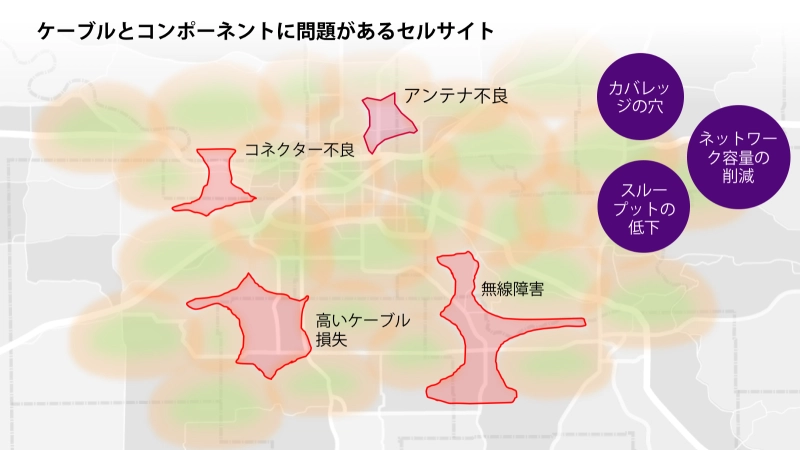
5G の展開ツール
5G は、ワイヤレスネットワークインフラのすべての要素を変革しました。ファイバーや RAN、トランスポート、および資産の管理などがそうです。5G NR 展開の各段階の実装に対応するには、専用のツールキットが必要です。通信事業者は、独自の手続き手法(MOP)を開発しました。多くの場合、ファイバーテストや OTA 検証、ビーム解析、カバレッジ、およびスループットテストへのアプローチが包括的であるほど、成功の度合いは増します。パフォーマンスの低いセルサイトが 1 つあるだけで、大規模な展開全体の立ち上げが遅れる場合があります。
新しい 5G ネットワーク機器の検証および妥当性確認段階では、ラボで 5G コアおよび実際のユーザーの動作をシミュレートできるテストソリューションが、5G 信号をアクティブ化する前に 3GPP 準拠とサービス品質を確立するのに役立ちます。 TM500 ネットワークテスターは、5G ネットワークユーザーの体験を評価できます。他のユーザーとのやり取りのシミュレートや、モバイルの世界での電子メールやストリーミングなどの代表的な実際のデバイスの動作などを評価できます。TM500 はまた、セルまたは搬送波ごとに大量の UE を使用して容量を評価することもできます。
テクノロジーの展開、アクティブ化、スケーリングの段階では、ミリ波での 5G 信号のスペクトラムと干渉に、正確で信頼性の高い RF 特性評価と適合性テストが必要です。ポータブル型 OneAdvisor 800 では、リアルタイムスペクトラムと干渉解析を 5G ビーム解析機能と組み合わせられています。これにより、Massive MIMO およびアンテナビームの検証に最適なソリューションになります。OneAdvisor 800 にはまた、5G 展開に多様性を追加するためのファイバーテストと検査機能も組み込まれています。
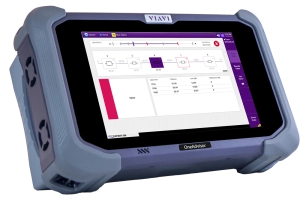
テストは、保証・最適化・収益化段階を通じて重要です。この段階では、体感品質(QoE)が完全に機能するネットワークのための大きな関心事となります。IoT や自動運転車などの高度なアプリケーションでは、誤差の許容範囲が非常に低い魅力的な収益化の機会を生み出されました。これにより、卓越したユーザーエクスペリエンスについての知見を得るためのモバイルイベントをキャプチャ、検索、分析するために不可欠な NITRO モバイルなどの、スケーラブルでリアルタイムのインテリジェンスプラットフォームが生まれています。
5G 展開は、「第 6 の技術革命」を証明するものと考える人もいます。歴史的に、5G の進化技術は、重要性のレベルで、蒸気動力、組立ライン、またはコンピュータ時代の夜明けに匹敵すると位置づけられます。
5G の採用によってもたらされるこの歴史的な特質により、大規模なインフラの進化とパラダイムシフトが先導されてきました。この変革の主要プレーヤーには、世界最高のエンジニアや科学者が数多くいます。インフラの専門家は、広範な新しいユースケースには、標準化と柔軟性の両方が必要であることを認識しています。この 2 つを同時に達成するのは難しい場合がありあります。新たなインフラ仕様の順守と機能の多様性により、最高の 5G テストツールは、進化する 5G 展開環境の基本コンポーネントとなっています。
今すぐ VIAVI の支援を受けて 5G 展開を成功させてください!
VIAVI の 5G テスト製品またはソリューションで次の一歩を踏み出しませんか?
以下のフォームの 1 つに記入して、さあ始めましょう。
VIAVIはお客様のためにあります
VIAVIはお客様の成功のお手伝いをします。
